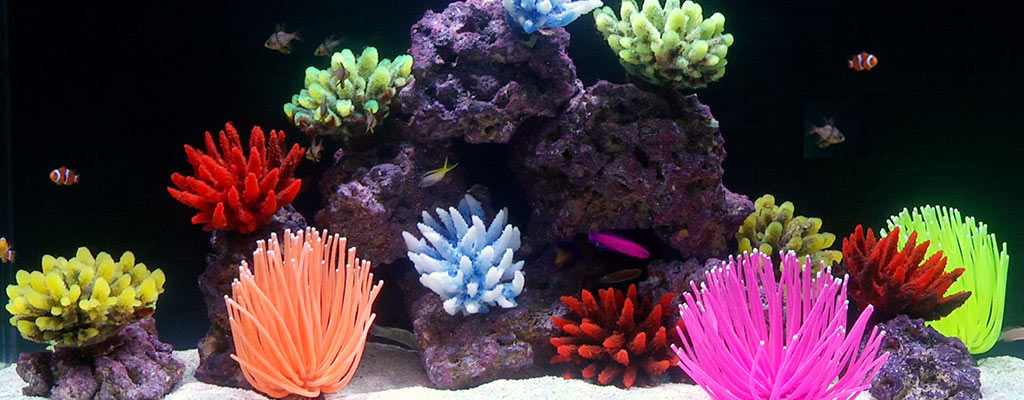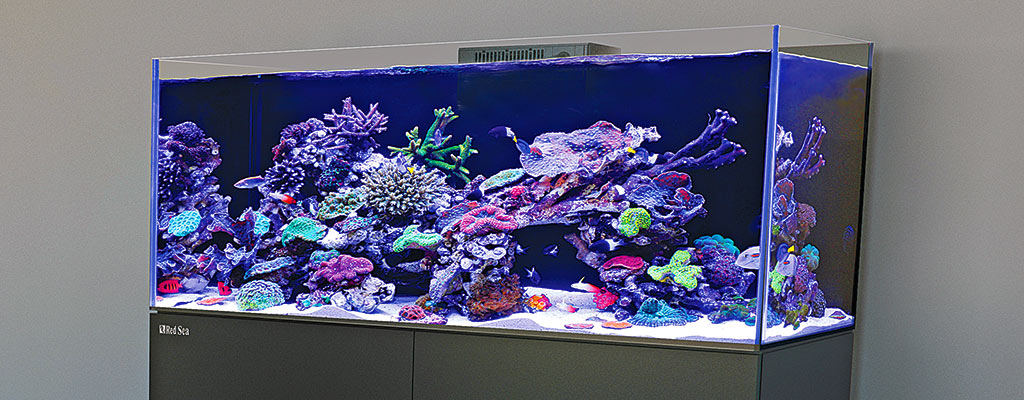|
Saltwater Aquarium Basics

The key to a stable, healthy, and flourishing saltwater (marine) aquarium is consistent water parameters. A properly selected assembly of aquarium equipment and supplies works together to maintain stable water parameters essential for a thriving aquatic environment. Learn more about the fundamental equipment essential for a successful saltwater aquarium setup.
Filters
Filters are essential to any aquarium, helping to maintain and keep water quality at optimal levels. Filters perform this vital function by efficiently removing pollutants and other harmful materials. Without proper filtration, your aquarium will not be able to support life. Properly match your filter to your aquarium by referring to the recommended aquarium size indicated on the filter. “All-in-one” aquarium systems have properly matched filters built right into the unit to streamline product selection.
Heaters and Thermometers
Marine fish prefer stable water temperatures between 76-78ºF.
Aquarium heater manufacturers include suggested aquarium size for each heater. But as a general rule, select a heater that provides approximately 3 to 5 watts per aquarium gallon. For example, a 10-gallon aquarium should be outfitted with a 30- to 50-watt heater. In addition, an accurate and reliable thermometer to monitor aquarium water temperature is essential.
Lighting
Aquarium lighting provides two main functions. It illuminates your aquarium for aesthetic enjoyment of the inhabitants and decorations and provides functional light needed to support plants, corals, and other photosynthetic life in the aquarium. Light fixtures designed do the latter are typically designated as such, indicating their purpose with names such as “plant light” or “coral/reef light.”

Water Conditioners
Most tap water sources are not suitable for aquarium use without the addition of aquarium water conditioners. Tap water may contain chlorine, chloramine, or other chemicals harmful to aquarium fish. To make tap water suitable for aquarium use, employ aquarium water conditioners such as chlorine/chloramine removers along with beneficial nitrifying bacteria which helps establish biological filtration that naturally processes nitrogenous aquarium pollutants. Using reverse osmosis (RO) water instead of tap water is highly recommended when preparing synthetic salt mixes for marine aquariums.
Test Kits
Test kits are essential for measuring and monitoring important aquarium water parameters such as pH, ammonia, and nitrite. Regular routine testing lets you know if the aquarium water is within an acceptable range for healthy aquarium inhabitants. For marine aquariums, it is important to measure and monitor specific gravity and salinity with a hydrometer or refractometer.
Substrate and Decorations
In addition to beautifying and personalizing your aquarium, substrate and decorations provide important habitat for your aquarium inhabitants. A typical aquarium with a one- to two-inch layer of substrate uses roughly one to two pounds of substrate per gallon. Decorations for your saltwater aquarium such as artificial corals and live rock can be arranged to your liking for the finishing touches.
|